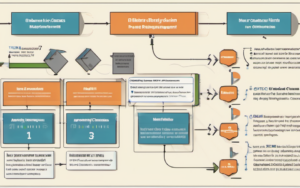The rise of blockchain technology has revolutionized various industries, but its environmental impact, particularly from blockchain mining, has drawn significant attention. While blockchain offers numerous benefits, the energy-intensive nature of mining processes has raised concerns about their contribution to climate change. This post delves into the environmental impact of blockchain mining, exploring its energy consumption, carbon footprint, and mitigation strategies.
The Environmental Impact of Blockchain Mining
Introduction
Blockchain mining is a fundamental process that secures and validates transactions on a blockchain network. It involves solving complex computational problems, known as “mining,” to add new blocks to the blockchain. This process requires significant computational power and, consequently, substantial energy consumption. The environmental impact of blockchain mining is a complex issue with both challenges and opportunities.
Energy Consumption and Carbon Footprint
Proof-of-Work (PoW) Consensus Mechanism
The most common consensus mechanism used in blockchain mining is Proof-of-Work (PoW). PoW relies on miners competing to solve complex mathematical problems, with the first miner to solve the problem receiving a reward in the form of cryptocurrency. This process is energy-intensive because miners constantly expend computational power to solve these problems.
Energy Consumption Estimates
The energy consumption of blockchain mining varies significantly depending on factors like the specific blockchain, the efficiency of mining hardware, and the electricity mix used. Estimates suggest that blockchain mining consumes a substantial amount of energy globally, comparable to the energy consumption of entire countries. For example, Bitcoin mining alone is estimated to consume more energy than some small countries.
Carbon Emissions
The energy used for blockchain mining is often generated from fossil fuels, leading to significant carbon emissions. This contribution to greenhouse gas emissions raises concerns about blockchain mining’s impact on climate change. While some regions use renewable energy sources for blockchain mining, the reliance on fossil fuels remains a significant challenge.
Factors Influencing Energy Consumption
Hash Rate
The hash rate refers to the computational power of a blockchain network. A higher hash rate means that more miners are competing to solve problems, leading to increased energy consumption. As the hash rate increases, the difficulty of mining also increases, requiring more computational power.
Hardware Efficiency
The efficiency of mining hardware, such as ASICs (Application-Specific Integrated Circuits), plays a crucial role in energy consumption. Newer, more efficient hardware can significantly reduce energy consumption per unit of hash power generated. Advancements in hardware technology have led to significant improvements in energy efficiency in recent years.
Electricity Mix
The electricity mix used to power blockchain mining operations influences their environmental impact. Regions with a high reliance on fossil fuels for electricity generation will have a higher carbon footprint than those using renewable energy sources. The choice of electricity source is a critical factor in determining the sustainability of blockchain mining.
Mitigation Strategies
Proof-of-Stake (PoS) Consensus Mechanism
An alternative to PoW is Proof-of-Stake (PoS). PoS consensus mechanisms rely on validators who hold a certain amount of cryptocurrency to secure the network. Validators are selected based on their stake, and they receive rewards for validating transactions. PoS is significantly more energy-efficient than PoW, as it does not require intensive computational power.
Renewable Energy Sources
Using renewable energy sources, such as solar, wind, or hydroelectric power, for blockchain mining can significantly reduce carbon emissions. Several initiatives are underway to integrate renewable energy sources into blockchain mining operations.
Energy Efficiency Improvements
Continual improvements in hardware efficiency, optimization of mining software, and advancements in network protocols can contribute to reducing energy consumption. These improvements can significantly reduce the environmental impact of blockchain mining over time.
Regulation and Policy
Governments and regulatory bodies are increasingly focusing on the environmental impact of blockchain mining. Some jurisdictions are considering policies to incentivize the use of renewable energy sources for blockchain mining, while others are exploring regulations to mitigate the environmental impact of the industry.
Conclusion
Summary of Key Findings
The environmental impact of blockchain mining, particularly due to the energy-intensive nature of PoW consensus mechanisms, is a significant concern. The energy consumption associated with blockchain mining contributes to greenhouse gas emissions and climate change. However, mitigation strategies, such as the adoption of PoS, the use of renewable energy sources, and advancements in hardware efficiency, offer potential solutions to reduce the industry’s environmental footprint.
Future Directions
The future of blockchain mining hinges on finding sustainable solutions to address its environmental impact. Continued innovation in consensus mechanisms, the adoption of renewable energy sources, and regulatory frameworks that promote environmentally responsible practices are crucial for the long-term sustainability of the industry. As blockchain technology continues to evolve, it is essential to prioritize its environmental impact to ensure its responsible and sustainable development.




